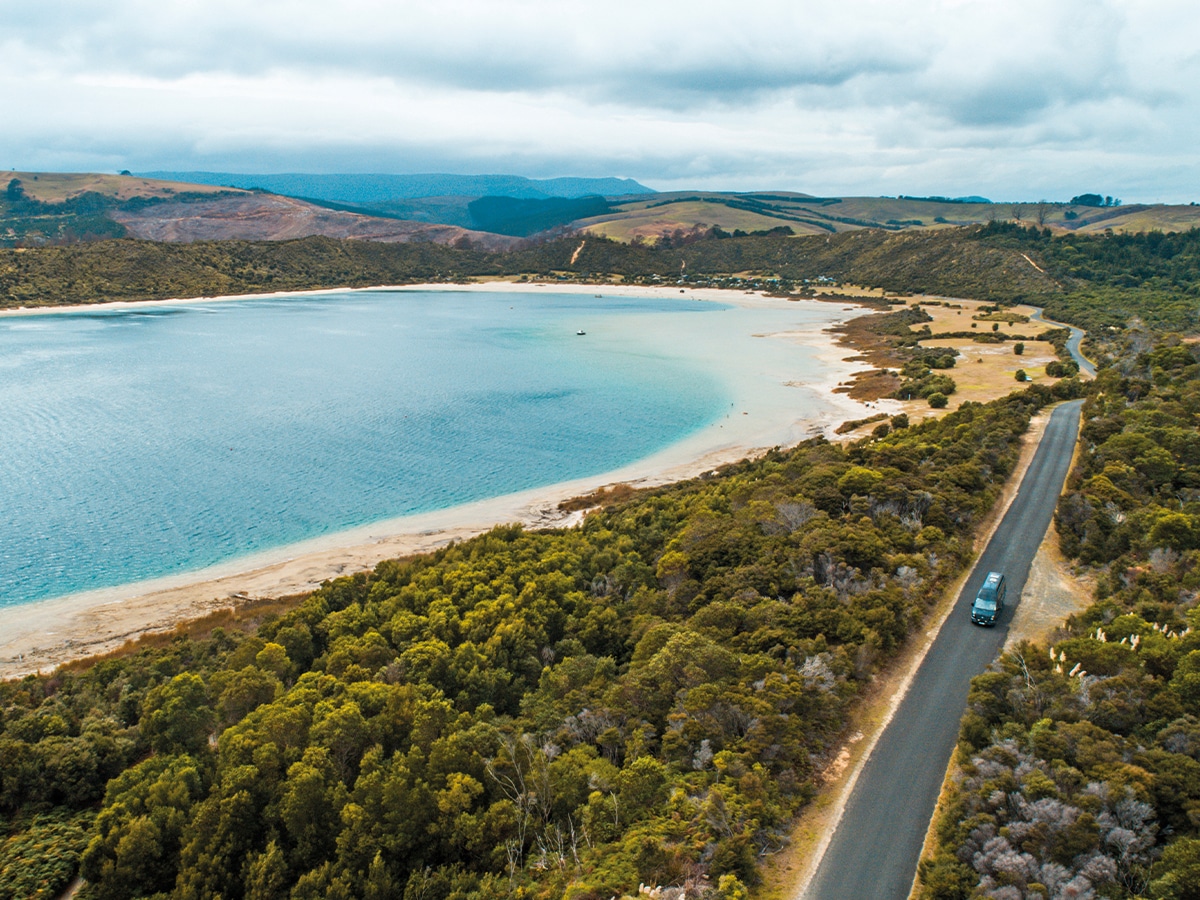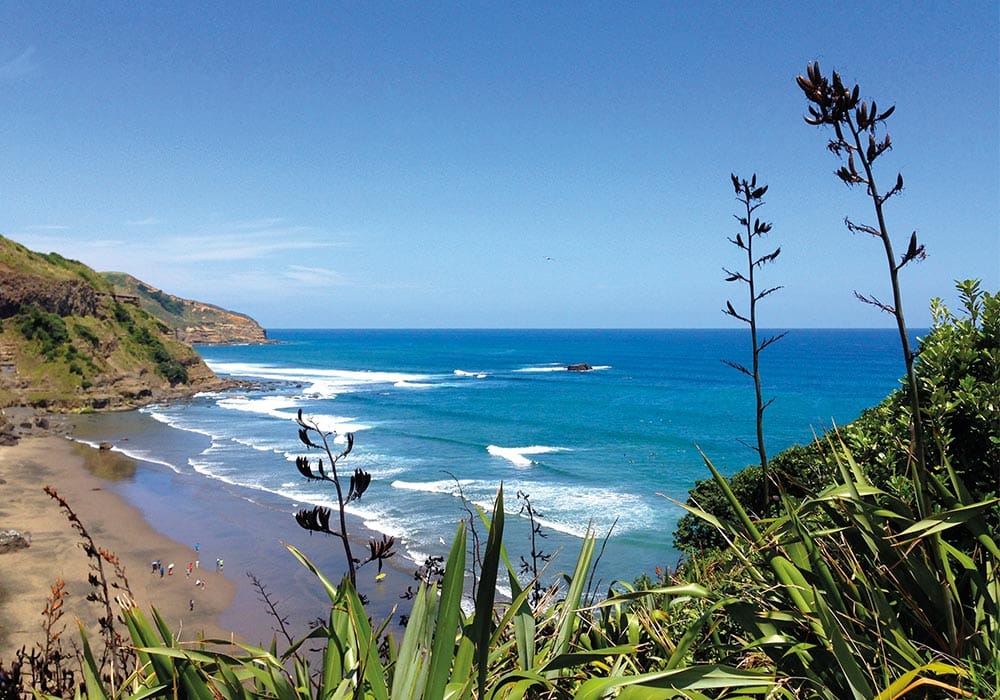Heading West out of Auckland towards the Waitakeres, Pamela Wade discovers an abundance of natural treasure just a stone’s throw from the big smoke.
“Go West, young man!” Also, north, east and south again; and, obviously, not just young men – but the command is still worth obeying for a rewarding loop out of Auckland, skirting three huge harbours. Heading west out of the city towards the Waitakeres, you’ll soon discover that there’s gold in them thar hills. On a trail up the west coast, linking the triple harbours of Manukau, Kaipara and Hokianga, there’s a wealth of treasures to enjoy, both natural and man-made. Man-made comes first, before you’ve even left the city. At New Lynn, Te Toi Uku Crown Lynn and Clayworks Museum will spark recognition in any Kiwi of a certain age. That distinctive and very practical china is immediately familiar, and this enthusiastically well-presented little museum tells the whole story, from local clay through powerline insulators to plates, mugs and eminently collectible swan ornaments.
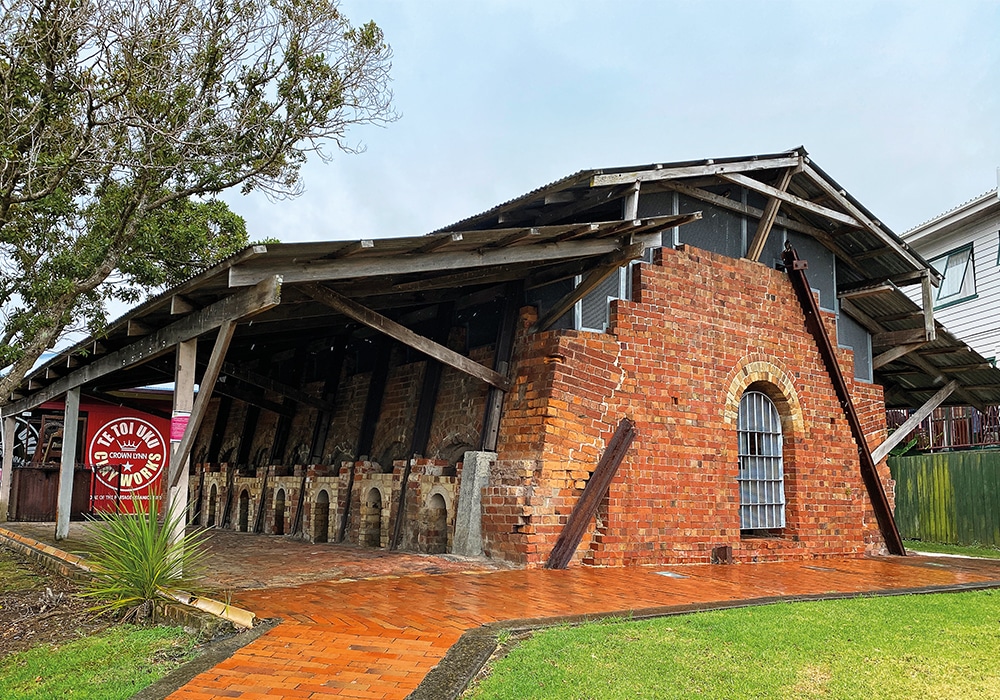
Leaving the suburbs behind, the next stop is the arty little town of Titirangi, where the streets are home to more coffee shops and roaming chickens than you might expect. Well worth investigating is the Te Uru Waitākere Contemporary Art Gallery, a modern building with changing exhibitions of contemporary art of all types. Just as impressive as the exhibits themselves are the views over the wooded Waitakeres all the way to the sea. In that bush, not far outside town, is the home of perhaps our most famous modern artist. Colin McCahon House is startlingly basic, a simple building where his daughters’ bedroom downstairs was open to visiting possums. In the kitchen is the plate rack McCahon made out of knitting needles. The art, though, is rich, and well displayed and explained throughout the rooms.
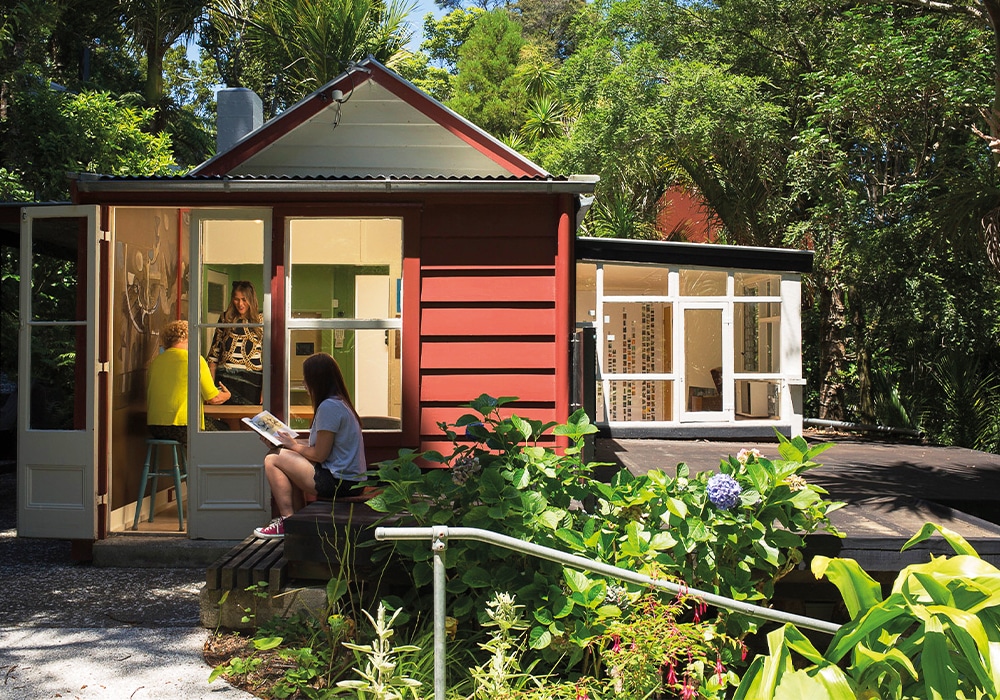
To nature
Now it’s time for some of the nature that McCahon loved so deeply. It’s a long, but scenic, drive along Huia Road from Titirangi to Whatipu Lodge Campground, stopping off along the way. There are beautiful beaches, like Cornwallis with its 193 metre-long wharf, and the great and invariably empty stretch of Kaitarakihi Beach. At Huia, do make time to have a poke around in its little museum, to learn the stories of early exploration and settlement here on the shores of the Manukau Harbour, and of our worst shipwreck.
Continuing now along Whatipu Road, there are great views over the harbour before you wind down finally to the simple campground, across a narrow bridge. Stretch your legs here by taking the track down to the black sand beach to gaze across the treacherous harbour mouth, site of that fatal sinking. Before the sun sets in a blaze of glory, seek out the caves where, in the biggest, around a century ago locals used to come to glittery dances.
Retrace your tracks next day towards Titirangi, to follow the well-named Scenic Drive for more Waitakere Ranges treats, like the walk to lovely Kitekite Falls near Piha. Or go a bit further north to Muriwai Beach. The must-see here is the gannet colony at the southern end – standing on the clifftop, looking down on the neatly spaced nesting sites of these busy seabirds is a real delight.
Both Piha and Muriwai are popular with surfers, and have cafés. Back now to the main road, SH16, towards Helensville, where an interesting stop is just outside town at the Helensville Museum. Sited in the Riverside Reserve and surrounded by lovely gardens, it’s housed in a number of historic buildings including a cottage, the old school and courthouse. It’s not far from here to Parakai Springs, a classic hot-springs resort with an adults-only rock pool, and both indoor and outdoor swimming pools. Following the Kaipara Coast Highway north from Helensville, don’t miss the Kaipara Coast Garden Centre and Sculpture Park. Along a two-kilometre path through formal gardens and bush changing exhibition of 40 striking outdoor artworks. They are stunning, and so widely varied, it’s guaranteed everyone will lust after some of them.

North Bound
Skirting the massive Kaipara Harbour, it’s an easy drive now northwards, passing Omeru Reserve where there’s a pretty waterfall. Just before you join SH1 at Wellsford, consider visiting the Albertland and Districts Museum. Learn here how the settlers were cruelly conned – and also gaze upon the first ever Buzzy Bee. Further on, it’s almost obligatory to stop in Kaiwaka at the remarkably arty Eutopia Café. From its seagull-roofed entrance to the colouredglass decorations in the toilets, it’s both unique and a delight.
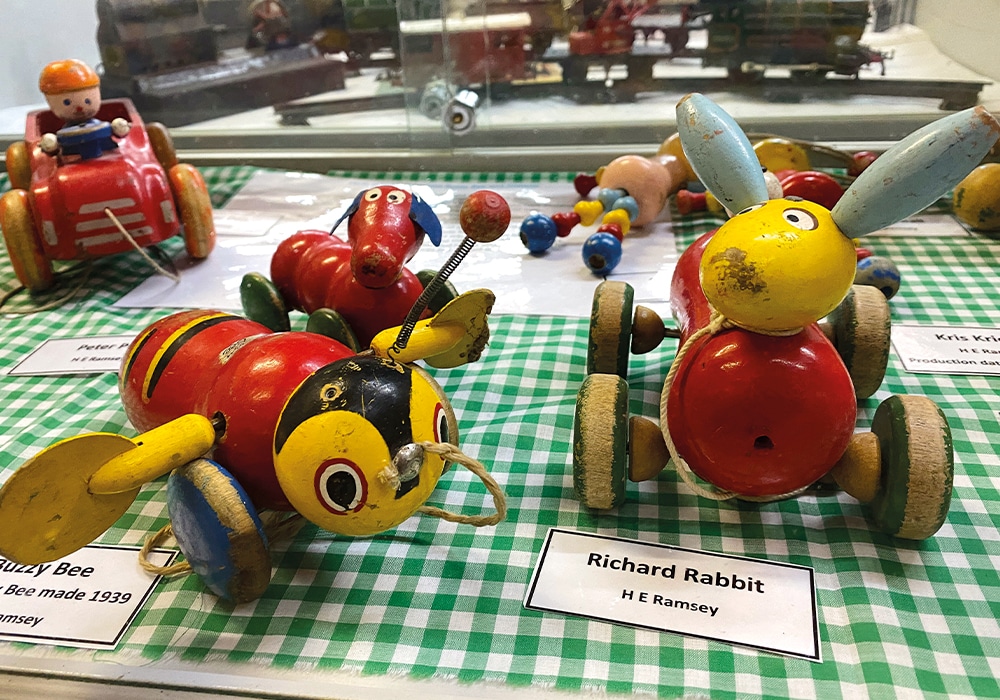
Taking a left turn before the challenge of the Brynderwyn Hills, follow the Twin Coast Discovery Highway and stop finally at Matakohe’s beautifully peaceful campground. The Kauri Museum here is really well done. The story of logging, and gum digging, is fascinating, and some of the exhibits are literally massive. It’s not just wood – the domestic lives of the early settlers are well represented, and the restored heritage buildings include school, post office and church.
At Dargaville, you’re still only 2.5 hours’ drive from Auckland, but it feels like another country. Proudly Aotearoa’s kūmara capital, you can go for a railcart tour here, watch kauri being carved or perhaps detour down to the harbour mouth at Pouto Point, where you can walk to a historic lighthouse along a beach where shipwreck remains are still visible. Driving up the Kauri Coast, another detour, to Kai Iwi Lakes, is essential. Uniquely dune lakes, their white sandy bottoms guarantee sparklingly clear fresh water. There’s a campsite here too. At Waipoua, you get to see how all that golden kauri wood started life.
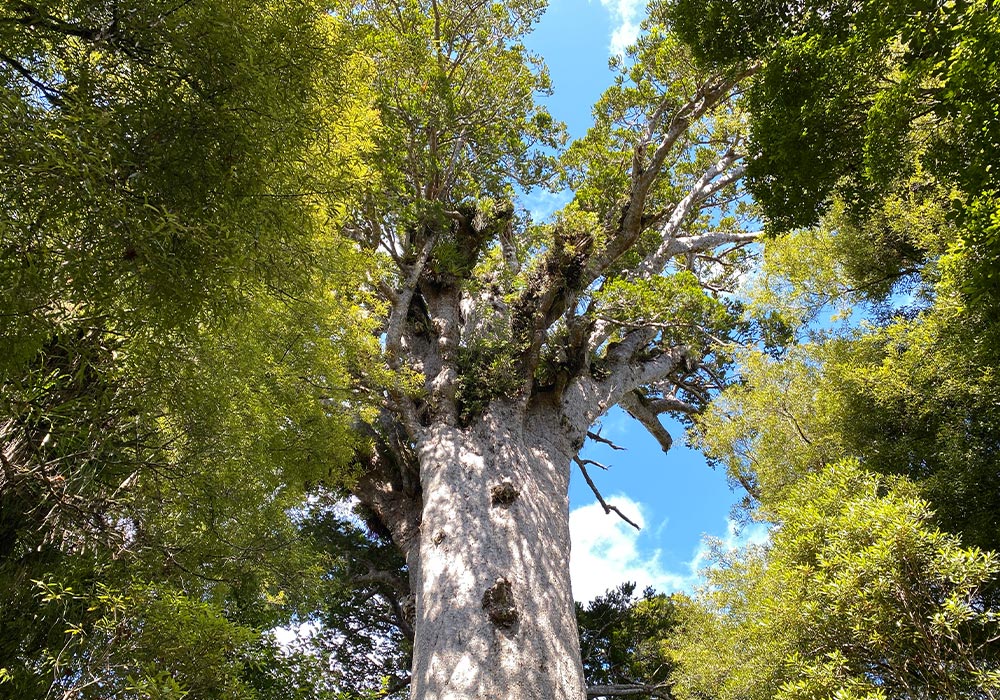
You’re suddenly into mature, untouched kauri forest, and it’s a revelation: tall, thick and lush, a treasured remnant of what once covered the country, from Coromandel to Cape Reinga. The star is Tane Mahuta, and the best way to marvel at this, and Tane Matua Ngahere, the two biggest kauri in the world, is with Footprints Waipoua. From their base in Opononi, a guide will welcome you and give you all the background stories and information. Best of all is to take their Twilight Tour, when you have the trees to yourselves, and the atmosphere is magical.
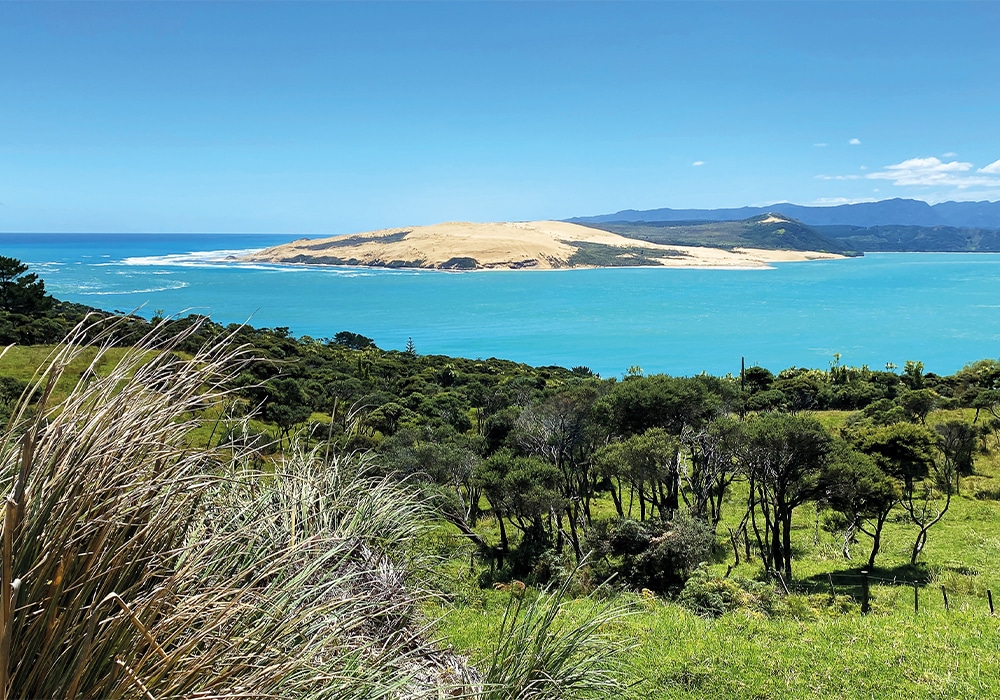
Small town treasures
You’re on your way to Opononi now, but you must stop at the Pakia Hill Lookout for a spectacular view over the mouth of your third harbour, the Hokianga. At Opononi, famous for its friendly dolphin Opo, now long gone, Manea Footprints of Kupe is an amazing live performance and 4D experience. It tells the dramatic story of the master navigator who arrived at, and departed from, Aotearoa here in the Hokianga. There’s a simple campsite further on, at Koutu Mangeroa, or you can press on to the Rawene Holiday Park. This is a delightful little town, colourful and arty, with a café perched right over the water, giving great views of the car ferry that buzzes back and forth to Kohukohu.
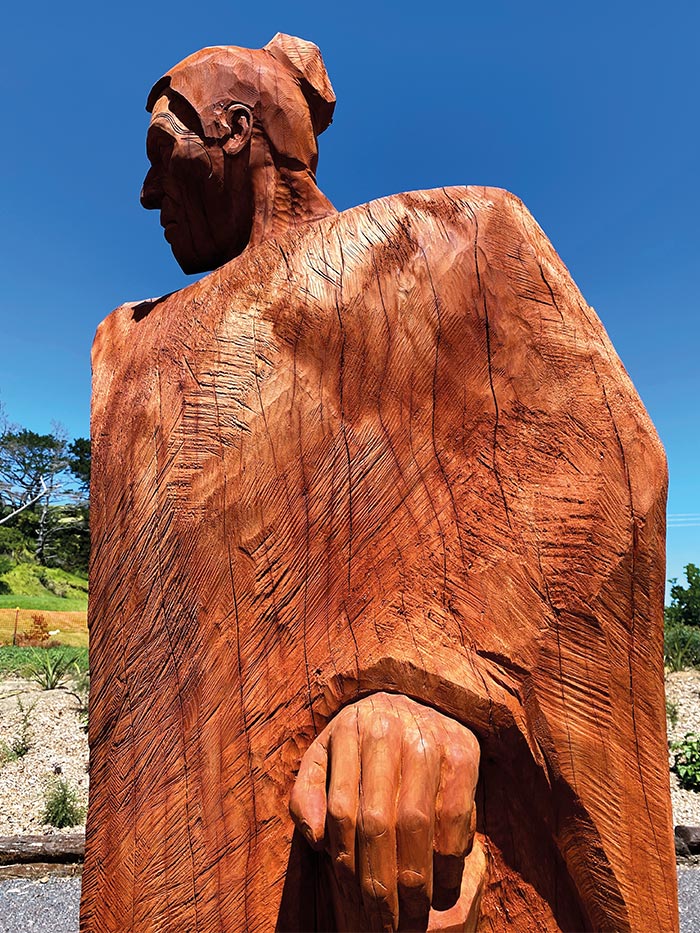
The fish and chip shop is busy with locals – always a good sign – and you can pretend to earn your feed with a gentle stroll along the Mangrove Walk. More strenuous, but also more rewarding, is the walk you can do at Wairere Boulders Nature Reserve. To get there, you’ll have driven along the harbour edge and ideally will stop at Mangungu Mission House, where the Treaty of Waitangi was first signed, and where there is a lot of interesting history, including the introduction of honey bees to New Zealand, and our first hanging.
At Wairere Boulders, there’s a welcoming campsite where it’s worth staying so you can make the most of the trail here. Running along the river valley, the stars are its 2-8 million year-old water-sculpted basalt boulders, but the bush, birds and views back down to the harbour mouth add plenty of value.
Back on Taheke Road, you’ll rejoin SH12 and have a smooth run into Kaikohe, whose old bank has been converted into the Left Bank hotel where you can dine well in its stately surrounds. The Pioneer Village here is worth a visit, too, its heritage buildings full of items of interest, from a brooch to a sawmill engine. Stay at the Cowshed Camping Site just outside town. After all that driving, walking and paying attention, it’s time to relax. At the newly renovated Ngawha Springs each of the 16 geothermal springs has its own properties. Varied in temperature, mineral content and even colour, they’re the ideal place to soak and be soothed, mentally and physically. A wallow here is part of everyday life here for the locals, and it can be a sociable occasion – or just opt for a private pool. Whichever, your skin will thank you.
Drive south from here to complete the loop. Auckland is just 3.5 hours away – and so is yet another harbour…
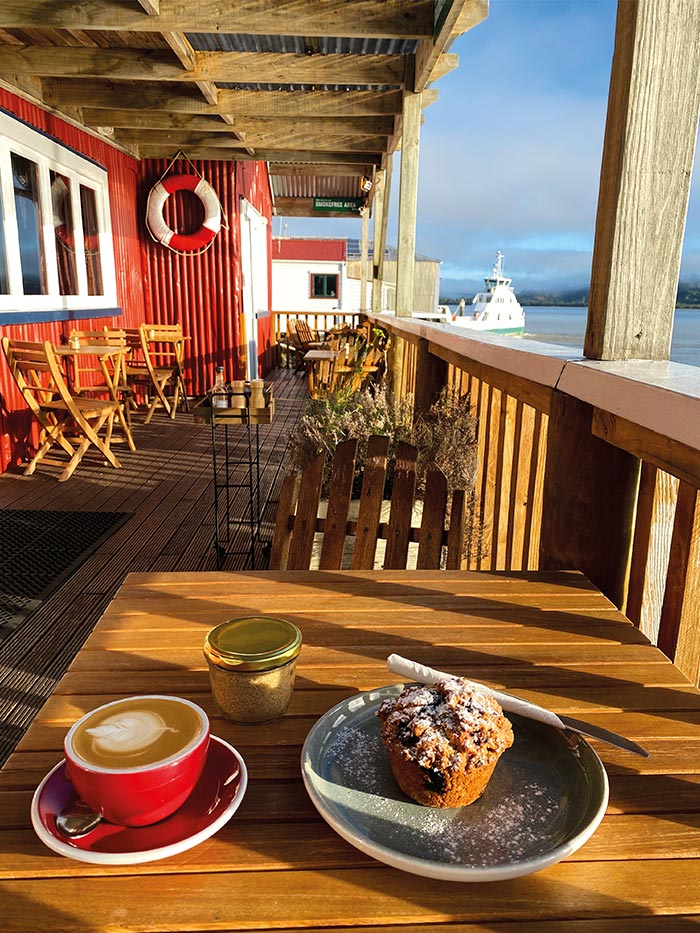
Places to visit
• Te Toi Uku Crown Lynn and Clayworks Museum tetoiuku.org.nz/
• Te Uru Waitākere Contemporary Art Gallery teuru.org.nz
• Colin McCahon House mccahonhouse.org.nz
• Helensville Museum helensvillemuseum.org.nz
• Kaipara Coast Garden Centre and Sculpture Park kaiparacoastplantcentre.com
• Albertland and Districts Museum albertlandmuseum.co.nz
• Kauri Museum kaurimuseum.com
• Footprints Waipoua footprintswaipoua.co.nz
• Manea Footprints of Kupe maneafootprints.co.nz
• Wairere Boulders Nature Reserve wairereboulders.co.nz
• Pioneer Village pioneervillage.org.nz
• Ngawha Springs ngawha.nz
Places to stay
• Whatipu Lodge Campground whatipulodge.co.nz
• Piha Campground pihacamp.com
• Muriwai Beach Campground muriwaibeachcampground.co.nz
• Matakohe Holiday Park matakoheholidaypark.co.nz
• Kai Iwi Lakes Campground kaiiwicamp.nz
• Rawene Holiday Park raweneholidaypark.co.nz
| DISTANCES | KM |
|---|---|
| Titirangi to Whatipu | 25 |
| Whatipu to Muriwai | 65 |
| Muriwai to Matakohe | 131 |
| Matakohe to Kai Iwi | 81 |
| Kai Iwi to Rawene | 92 |
| Rawene to Kaikohe | 35 |
| Kaikohe to Auckland | 252 |

